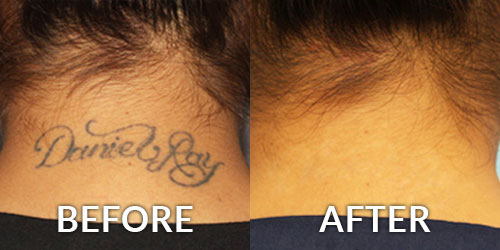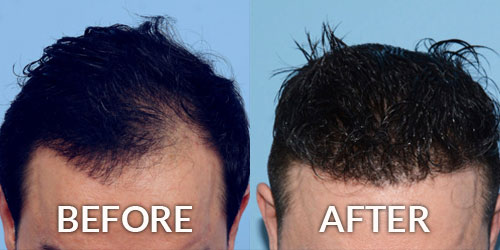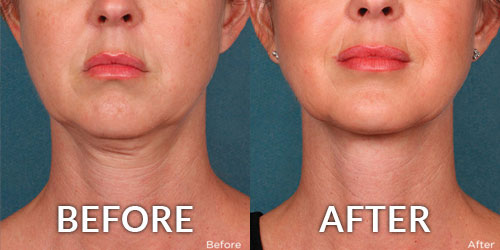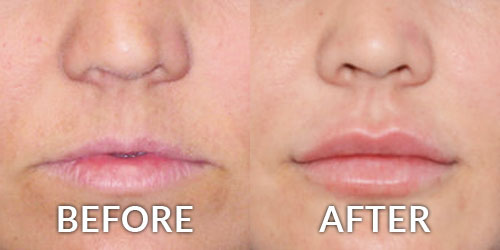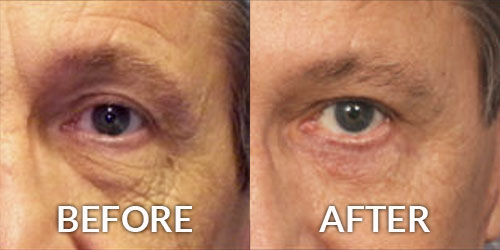Lumps & Bumps
Consultations offered at our two convenient locations in Phoenix and Scottsdale

Lumps and bumps on the skin are raised masses of varying size, shape, composition, and consistency. A lump on the skin can not only be a cosmetic concern, but can also be a nuisance because of its location, especially when it’s in a prominent place. When a visible bulge of tissue appears, it can be a warning sign that something isn’t quite right with our body, or it can be a result of our body’s natural processes. Thankfully, many lumps and bumps are common and harmless. There are many kinds, so trying to self-diagnose can be risky, or just cause unnecessary anxiety. The fact is, the only people who can provide answers are the experts!
At Phoenix Skin, we provide expert skin advice and treatment. The experienced medical professionals at our Phoenix and Scottsdale locations specialize in both adult and pediatric dermatology services. Arizona residents can get expert skin assessments and treatments at our specialist locations. Call our Phoenix office at (602) 222-9111, our Scottsdale location at (480) 473-9111, or fill out your request via our online inquiry form.
Contents
Medical Diagnosis
Two of the most commonly occurring lumps and bumps that dermatologists treat are epidermal cysts and lipomas. If you’ve been wondering about a lump that has recently appeared or a bump that has been there for some time, you may have one of these two conditions. Patients should be reassured that in the vast majority of cases, these are benign growths that do not pose any significant health risks.
These masses may or may not cause discomfort and may or may not change in size and appearance. However, it’s still important to see a medical professional for an accurate diagnosis. You’ll learn about the most effective treatment options and enjoy peace of mind.
What’s The Difference Between a Lipoma and an Epidermal Inclusion Cyst?
There are many sub-types of lipoma and epidermal inclusions, and oftentimes, they can look very similar on the surface. The key difference is what’s inside. In broad terms, epidermal inclusion cysts are relatively free-moving masses that contain keratin. Lipomas, in contrast, are bulges of tissue and contain adipose (fat) cells. Apart from their makeup, a noticeable difference between cysts and lipomas is how they feel when examined physically. Lipomas have what doctors describe as a firm, rubbery consistency. (1) Cysts can be more resistant to movement, whereas lipomas are softer and more easily moved. Every patient is different, so in some cases, cysts and lipomas can present in very similar ways. Therefore, for an accurate diagnosis, and a suitable treatment, it is essential to see a skin specialist.
Epidermal Inclusion Cysts
What is an Epidermal Inclusion Cyst?
When keratin builds up and has nowhere to go, an epidermal cyst can form. Of all skin cysts, the epidermal inclusion cyst is the most common. Epidermal inclusion cysts occur just below the surface of the skin, unlike deeper tissue irregularities that form closer to bone or other internal structures. Epidermal inclusion cysts are not contagious, and may be referred to as epidermoid cysts, infundibular cysts, keratinous cysts or “sebaceous cysts”
They can appear on various different locations on the body, including the:
- Face
- Scalp
- Trunk
- Back
- Neck
- Legs & Arms
Characteristics of Epidermal Inclusion Cysts
Studies have shown that they are most common in patients who are in their 30s and 40s, and are more common in men than women at a ratio of 2:1. (2) These round, raised cysts may grow slowly and can vary in size between a ½ inch to over one inch in diameter. Although they can be freely movable during examination, they are generally more “attached” to their surrounding tissues than lipomas. It is often difficult to determine if this type of cyst will remain as it is, enlarge, or become inflamed. (3) Epidermal inclusion cysts may resolve on their own but can also reoccur without treatment. Medical intervention to remove the cyst is necessary if it is causing discomfort.
Treatment for Epidermal Inclusion Cysts
It is very important you don’t attempt to pop a cyst yourself, as this can lead to unnecessary pain, infection and in some cases, significant scarring. We offer effective treatments for epidermal inclusion cysts. By injecting the cyst with medicine, we reduce swelling and inflammation in the area, which causes the cyst to dissipate. Some larger cysts require incision and drainage. With this method, one of our doctors makes a small cut in the cyst. After this, they gently palpate the tissue and carefully squeeze the contents out. If there is a high likelihood of cyst recurrence, your doctor can perform a minor surgery and remove the entire cyst sac.
Lipomas
Do I have a Lipoma?
Like cysts, lipomas are generally slow-growing masses that are often found in subcutaneous tissues. But, they are composed of a different material: fat. Adipocytes are the cells responsible for fat storage. Lipomas are soft, benign tumors composed of clumps of adipocytes. Lipomas rarely exceed ¾ inch in size, but in some rare cases they can exceed 4 inches, and are referred to as giant lipomas.
It is estimated that about 1 in every thousand people will have a lipoma at some point in their lifetime. (4) They can occur at any age, but usually appear in adulthood. Single lipomas are more common in women, and multiple lipomas occur more often in men. (5) They are most commonly found in the:
- Neck
- Shoulders
- Arms
- Thighs
- Torso
Treatment for Lipomas
Lipomas alone do not usually cause discomfort, however, if they press on other structures in their vicinity, such as nerves, they can become tender. Troublesome lipomas can be removed surgically. One way to remove a lipoma is to make a small cut in the skin and then push the contents out. Most lipoma removals are simple, outpatient procedures, and local anesthesia can be used to ensure the patient is comfortable.
More Lumps and Bumps: Other Types of Cyst
Cystic Acne
Cystic acne is a term given to a condition that can be characterized by inflamed lesions, pustules, papules, nodules, and cysts. (6) Various medical-grade topical creams and treatment types can address cystic acne. Procedures such as red and blue LED light therapy, glycolic peeling treatments and microdermabrasion can all improve skin texture, quality, and scarring.
Ganglion Cyst
Ganglion cysts are benign soft bumps that usually appear on the wrist. (7) They are not harmful in and of themselves, but if they interfere with mobility or cause discomfort, a patient should consider seeking medical advice. Around 50% of cysts spontaneously resolve, but it is sometimes necessary to remove them via surgical intervention.
Pilar Cysts
Pilar cysts are benign bumps that can develop on the surface of the skin. They form in the epithelial lining of the hair follicle, so they commonly occur on the scalp. They’re sometimes referred to as trichilemmal cysts or wens. They are usually firm and smooth. Pilar cysts usually don’t cause discomfort, but may become infected if patients attempt to remove them at home.
Pilonidal “Cysts”
Although not defined as true cysts by some clinicians, pilonidal disease results in cyst-like abnormalities in the skin. They mainly affect men and result from the effects on nearby tissues of ingrown hair. As they appear at the sacrum (above the midline of the buttocks and tailbone), there is a higher chance they could become infected, which could cause a painful abscess. Patients with this condition who are at risk of infection, or who already have an infection, should seek a professional medical opinion and treatment promptly.
For information about cysts, lipomas, and other skin conditions such as dermatitis, warts, acne, moles and more, please see our website, inquire online, or call our offices!
Phoenix Skin, Scottsdale location: (480) 473-9111
Phoenix Skin, Phoenix location: (602) 222-9111
Lumps and Bumps: When Should I Be Worried?
In most cases, cysts and lipomas are benign growths, but they may warrant further investigation by a specialist if they have certain telltale warning signs. Cancerous bumps are usually large, hard, and painless to the touch and appear spontaneously. These masses may also grow steadily in size. (8) To simplify the initial self-assessment process, patients should be mindful of the ABCDEs that may indicate malignancy:
- A – Asymmetrical, misshapen skin lesions.
- B – Border of the lesion is poorly defined
- C – Color of the lesion differs from one area to another
- D – Diameter changes in size, itches, or bleeds
- E – Evolving shape, size and color over time
To find out more about our treatments for moles and growths, forms of Skin cancer, and Mohs surgery please visit our website.
Personal Consultation
If you have a skin lesion, or an unidentified lump or bump, please come and see us. We will discuss your issues in a private consultation and formulate an individualized treatment plan based on accurate diagnosis and the most effective method of removal. Schedule a meeting to discuss your needs by calling our office in Phoenix at (602) 222-9111 or in Scottsdale at (480) 473-9111.
Cost of Cyst and Lipoma Treatments in Phoenix
Your treatment plan cost will vary in price according to your diagnosis and procedure type. This, and other important details can be discussed at your individual consultation. For financing and insurance information, please visit our website.
If you’re interested in finding out more about our services, please visit our blog for the latest tips, treatments, and procedures.
References
- Luba, M. C., Bangs, S. A., Mohler, A. M., & Stulberg, D. L. (2003). Common Benign Skin Tumors. American Family Physician, 67(4), 729–738. https://www.aafp.org/afp/2003/0215/p729.html
- Zito, P. M., & Scharf, R. (2020). Cyst, Epidermoid (Sebaceous Cyst). PubMed; StatPearls Publishing. https://www.ncbi.nlm.nih.gov/books/NBK499974/
- Weir, C. B., & St. Hilaire, N. J. (2020). Epidermal Inclusion Cyst. PubMed; StatPearls Publishing. https://www.ncbi.nlm.nih.gov/books/NBK532310/
- Kolb, L., Yarrarapu, S. N. S., Ameer, M. A., & Rosario-Collazo, J. A. (2020). Lipoma. PubMed; StatPearls Publishing. https://www.ncbi.nlm.nih.gov/books/NBK507906/
- Kosztyuova, T., & Shim, T. N. (2017). Rapidly enlarging lipoma. BMJ Case Reports, 2017, bcr–2017-221272. https://doi.org/10.1136/bcr-2017-221272
- Ayer, J., & Burrows, N. (2006). Acne: more than skin deep. Postgraduate Medical Journal, 82(970), 500–506. https://doi.org/10.1136/pgmj.2006.045377
- Gude, W., & Morelli, V. (2008). Ganglion cysts of the wrist: pathophysiology, clinical picture, and management. Current Reviews in Musculoskeletal Medicine, 1(3-4), 205–211. https://doi.org/10.1007/s12178-008-9033-4
- Church, D. J., Krumme, J., & Kotwal, S. (2017). Evaluating Soft-Tissue Lumps and Bumps. Missouri Medicine, 114(4), 289–294. https://www.ncbi.nlm.nih.gov/pmc/articles/PMC6140092/



